On Friday, November 25, 2016, TEB (Turkish Economy Bank) BNP Paribas organized a fun and productive event about customer experience management in different sectors. Many leading names from the retail industry came together to share which factors and details they pay attention to in customer experience management with the audience.
The event’s host was TEB Customer Experience Manager Alper Eksioglu. Alper Eksioglu made short and powerful intros before each talk, capturing audience’s attention and allowing them to adapt more quickly and to follow the fluent course of the passages.
The common point that everyone at the event agreed upon was the importance of the ability to provide quality service at the contact points with customers. Let’s look at the other points discussed by different representatives at this event that focused on management of customer experience, especially in the retail industry.
1. “Boyner’s Customer Experience Journey” presented by Gorkem Ihlamur (Boyner Customer Experience Unit Manager)
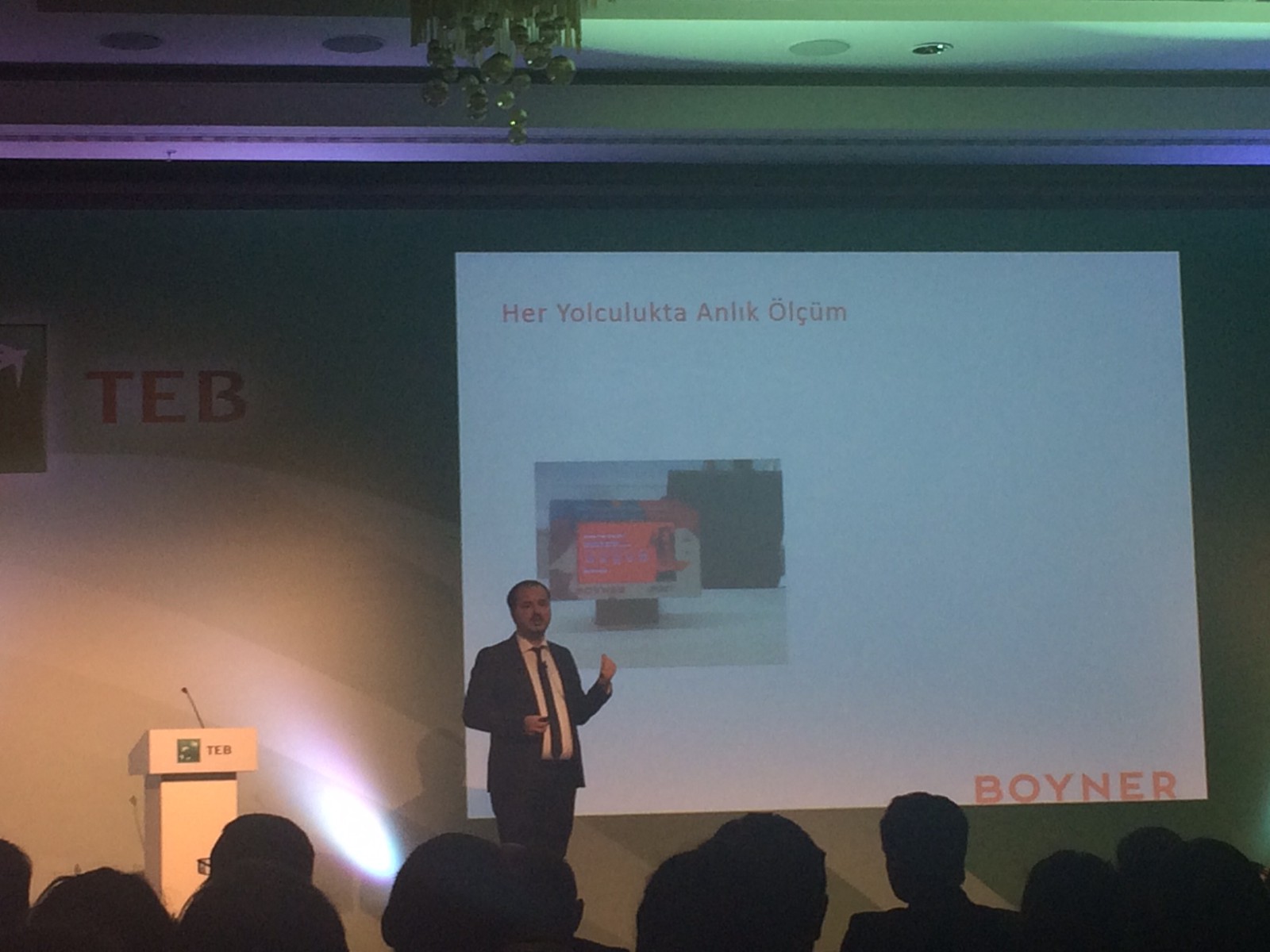
Gorkem Ihlamur from Boyner, a luxury-segment clothing and accessory retailer in Turkey, started his talk with: “You could enter and settle in the sector by providing a quality product or a good service, since the market previously used to be product-oriented. Today, it’s the reverse, it’s experience-oriented. if the customer does not feel special with you, he/she will not give you another chance.”
One of the most interesting facts he mentioned during his speech was that according to a survey conducted by Harvard Business Review, 89% of customers who had negative experience at a company go to another rival company. Plus, 48% of them share this experience with people around. So, a bad customer experience can cost you more than a single customer. Yet, 86% of all customers are willing to pay 25% more for a good experience. This means there is hope to counter bad experiences through personalizing customer experience.
The problem is, how can you provide each individual a special experience among all of your customers?
Offering a quick answer, Ihlamur told the audience that Boyner has integrated digital surveys with a Boyner loyalty card system that offers customized advantages to its customers. When a customer makes a purchase using the Boyner loyalty card, the digital surveys in front of the checkout are automatically personalized according to the customer’s details. And then the personalized surveys are presented to the customer. In the same survey, the client leaves open-ended comments and this helps Boyner shape its future action plans. All together, Boyner can manage a database of 25 million feedback with this system.
Through this system, Boyner increases its sales volume and customer happiness with personalized real-time surveys.
2. “Designing Customer Experience Transformation” presented by Abdulkadir Ercan Demirtas (Head of Turk Telekom Customer Experience Management)
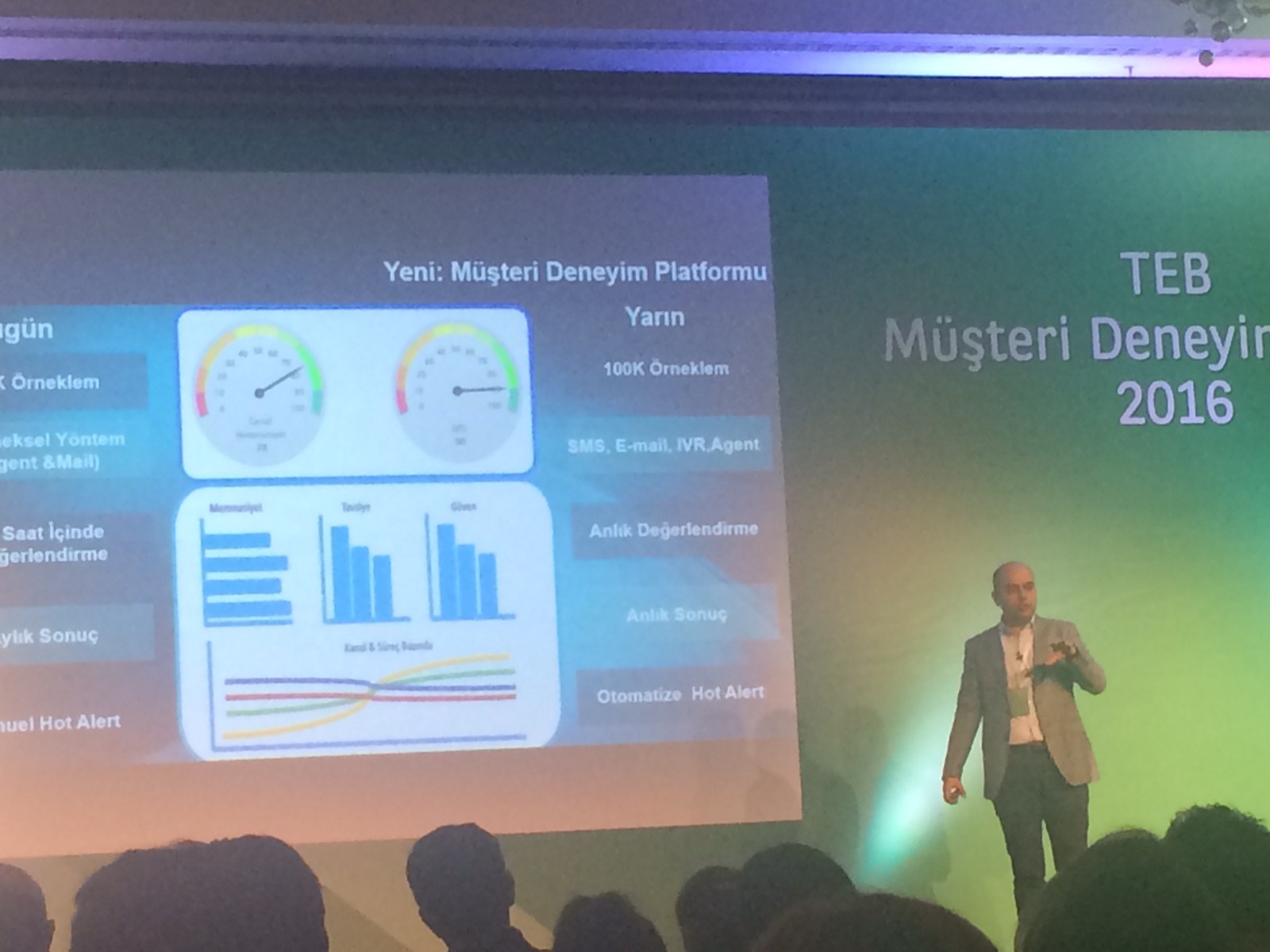
Turkish communication and IT monolith Turk Telekom’s Demirtas drew the attention of audience to another issue. All things considered, it’s not really logical to look at what’s coming from a single channel to understand what your customers really think. For example, by just looking at only NPS results, it’s not possible to determine whether a company is successful in customer satisfaction or not.
Additionally, there may be chaos if there is a lack of communication between the teams, as the data coming from the clients are in separate channels. For this reason, a common communication platform should be available for collecting and analyzing customer data that is easily operated by everyone involved in the customer experience management process.
Demirtas commented that using real-time platforms is a solution which he strongly recommends. Thanks to these platforms, instant customer experience management takes place as soon as the feedback is left and data is distributed on the common channel to all authorized parties in the company.
Relatdly, the action plans developed with the data should be shaped by all of the related teams. Demirtas shared Turk Telekom’s story as a successful example in this respect. Turk Telekom’s customer satisfaction system includes a section for employees. “How happy is the customer you are serving at the moment?” is a question directed to Turk Telekom’s employees. This practice is a pioneer one since it requires input from both sides of the interaction.
3. “Large Data in Finance World; Prepare Your Future Banking” presented by Ozgur Kaynar (Teradata Senior Business Consultant)
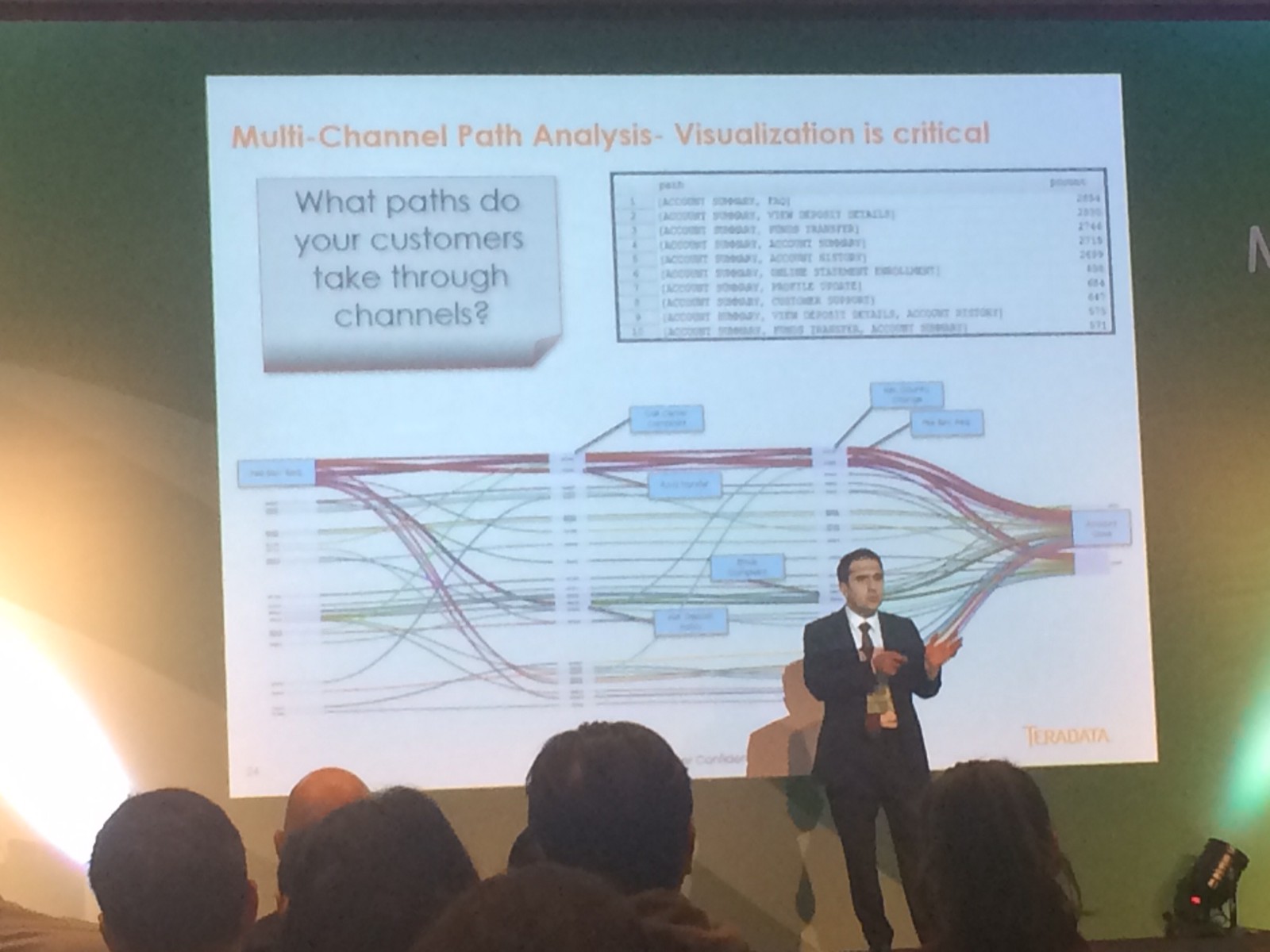
How can you ensure customer loyalty while the competition is so fierce in the banking sector? Even a single bad experience is enough to drive away most clients; they will abandon the bank in favor of competitors. Add in the fact that a bank needs to spend 3 times more energy and resources to recover a lost customer than finding a new one. Ozgur Kaynar from Teradata, a big data provider for businesses, highlighted these points. And as a response, he offered 5 steps to be taken in order to avoid such client-loss situations.
- Identify where the customer is having trouble
- Receive customer feedback from each channel and mobilize them.
- Use simple and convenient designs.
- Listen to customer feedback, take notes and apply them. This cycle should be continuous, since feedback flow of customers never ends.
- Be nimble. It is necessary to be able to change and improve yourself quickly.
For example, in a bank, the customer communicates with the bank by using the main and sub-channels, i.e. tellers and bank representatives. Account openings and closures are visible to customers and staff alike. But the other processes of customer experience management that slow down when customers enter the system are not visible. Nevertheless, they affect the customer experience. That’s why the whole team needs to know and master the details.
4. “Is It Product or Customer Experience to Differentiate Yourself From Competition?” presented by Deniz Devrim Cengiz (TEB Digital Banking Group Director)
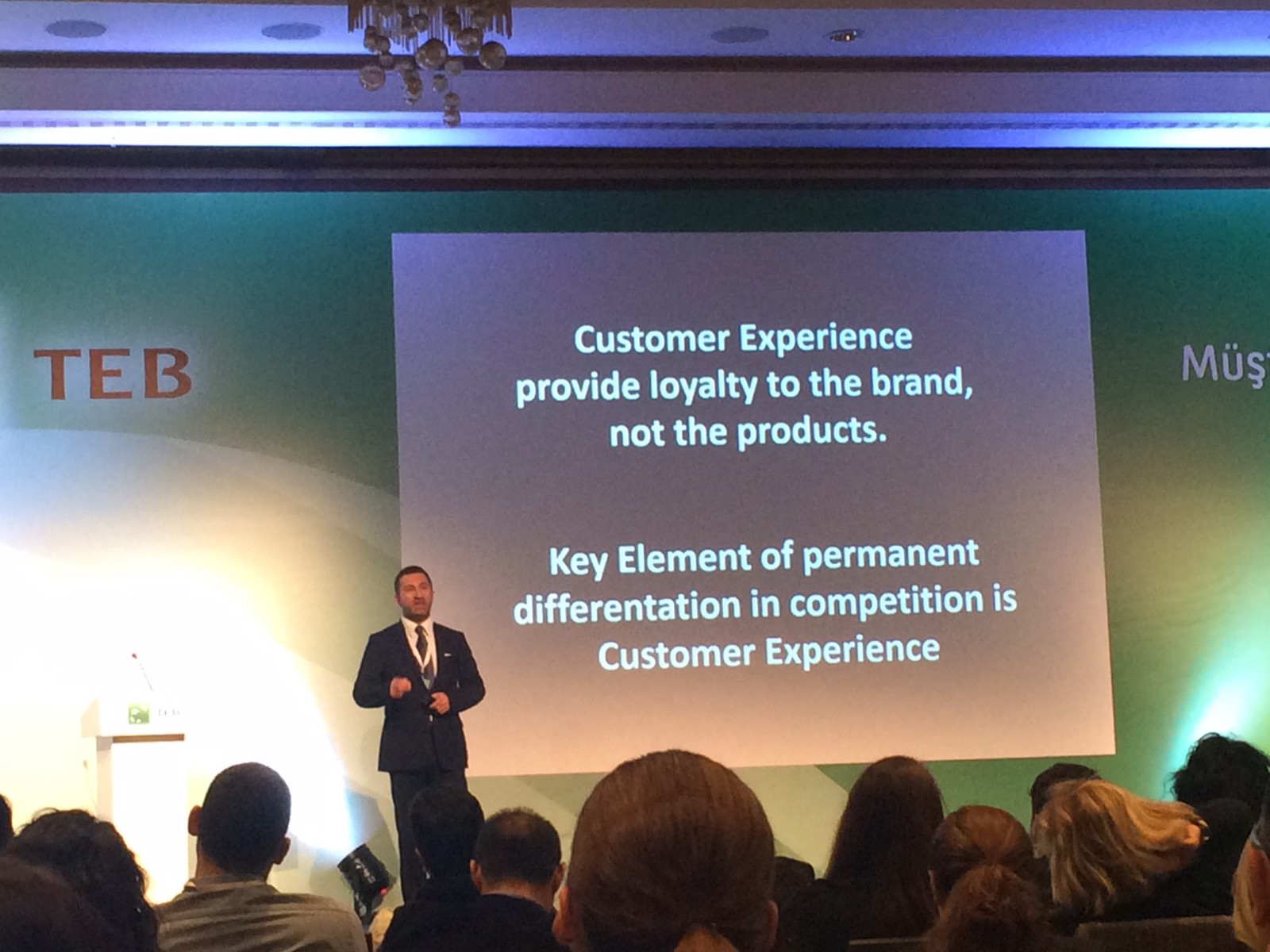
Deniz Devrim Cengiz from TEB (Turkish Economy Bank) raised these important questions: How do you build a loyal customer base in the contemporary banking sector? With the product? Cengiz continued by underlining that it is no longer possible to attract customers from the new generation based on the product alone. However, by incorporating an excellent customer experience into the whole process, you can make a difference and generate new loyal customers.
Cengiz had 3 solutions on this subject:
1. Incorporating Human Touch
Customers of this new generation wish to talk to the bank like a friend and actually see the person whom they are interacting. Just like when you’re writing to a friend on Whatsapp and your messages get instantly answered, customers expect the same from the bank. They expect answers instantly. Even minutes is a long time to wait for the new generation customers.
2. Proper Customization
TEB prepared separate advertising campaigns for men and women about its newest mobile app, “Ceptetep”. They also had a fun launch specially for its employees to make them embrace this new practice better.
Successful segmentation has made Capteteb campaign into a very successful advertising campaign.
3. Prioritizing Simplicity
In addition to being practical, the language you use in your interactions must be used the same as the language of the customer. If your customer uses “investment” instead of “deposit”, then you too should use “investment” in your communication with your customer.
Also, you need to know that you should make it easier for your clients when they are dealing with daily issues. For example, customers no longer have not to wait in line at airports thanks to the Cepteteb app.
As Deniz Cengiz commented: “Your customers will show high levels of tolerance when you act transparently and genuinely try to correct your mistakes.”
5. “Consumer Experience Speaks Louder than Words: Ways to Create a Meaningful Brand Image with Anthropology” presented by Sami Hotak (Karaca Group Marketing Director) — Aybil Goker (Habitus Founder)
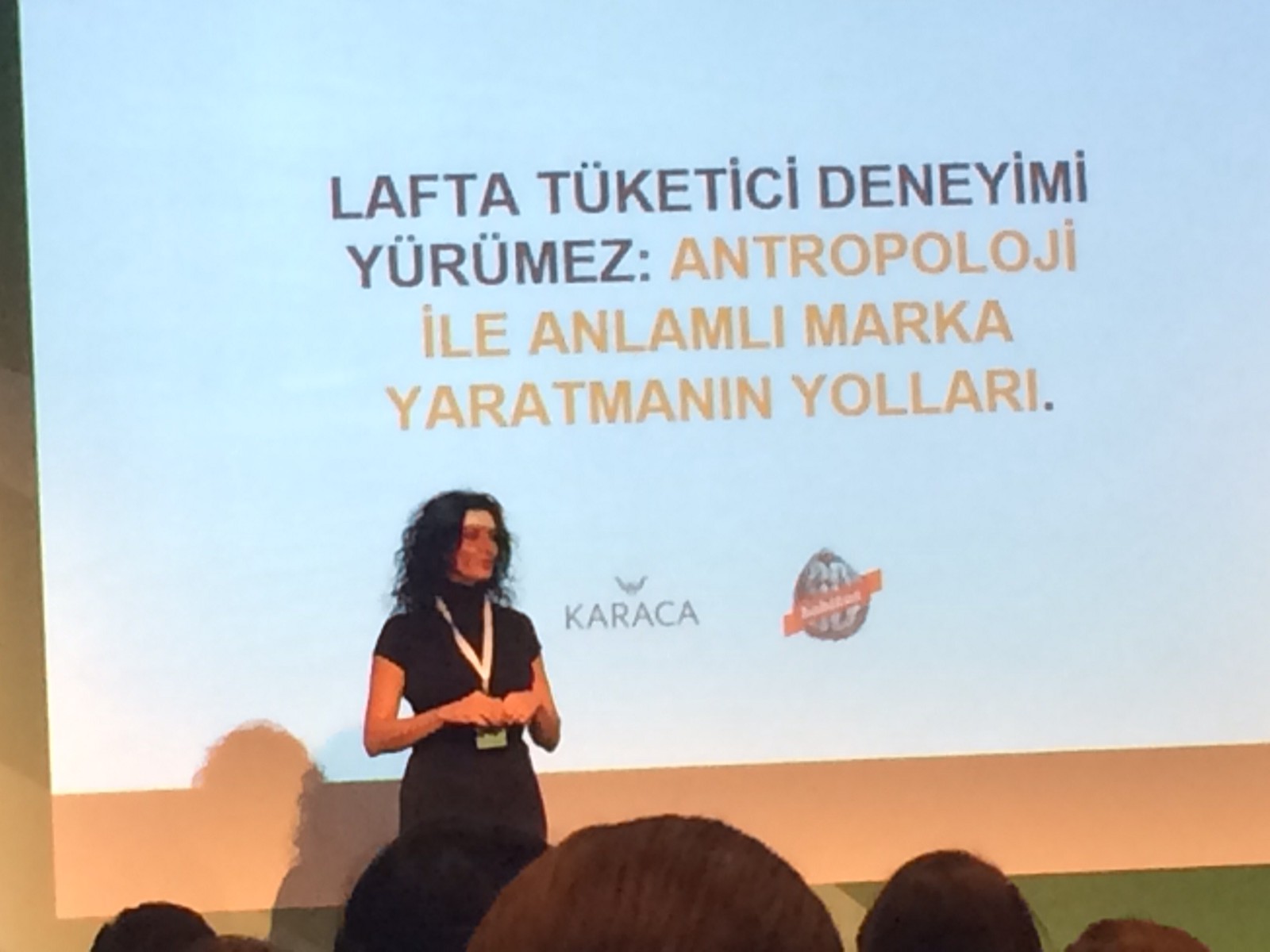
Sami Hotak from Karaca Group (a cutlery and tableware company in Turkey) and Aybil Goker from Habitus (an ethnographic research company) gave a talk together on a special topic. Every business would love their customers to stay permanently loyal to their brands. But, according to a survey, 74% of customers do not care that the brands they use today will disappear tomorrow. Ouch.
Nowadays, the point is not just marketing different new products. Now, products must carry a meaning for the customer. For this reason, a city-based anthropological study was carried out by Karaca Group in cooperation with Habitus. Country-wide socio-economic status research is hard to carry out, and since individuals from the same socio-economic class may develop very different consumption habits in different cities, a city-based one was chosen. In order to overcome this segmentation problem, Karaca and Habitus field research was extremely detailed.
As a result of the study, it was found that there are different consumption habits in each city as expected. For example, in Kayseri, the number of dishes on the table was very important, while the number of diners was important in Gaziantep and Hatay. People in Istanbul and Bursa placed importance on the organization of dining table, but in Izmir, the time spent at the table was important. This meant unique demands for cutlery and tableware.
In addition to this, Karaca studied the customer profiles through this study well and gave training to its salespeople according to their customer profiles. This action plan improved customer experience management greatly.
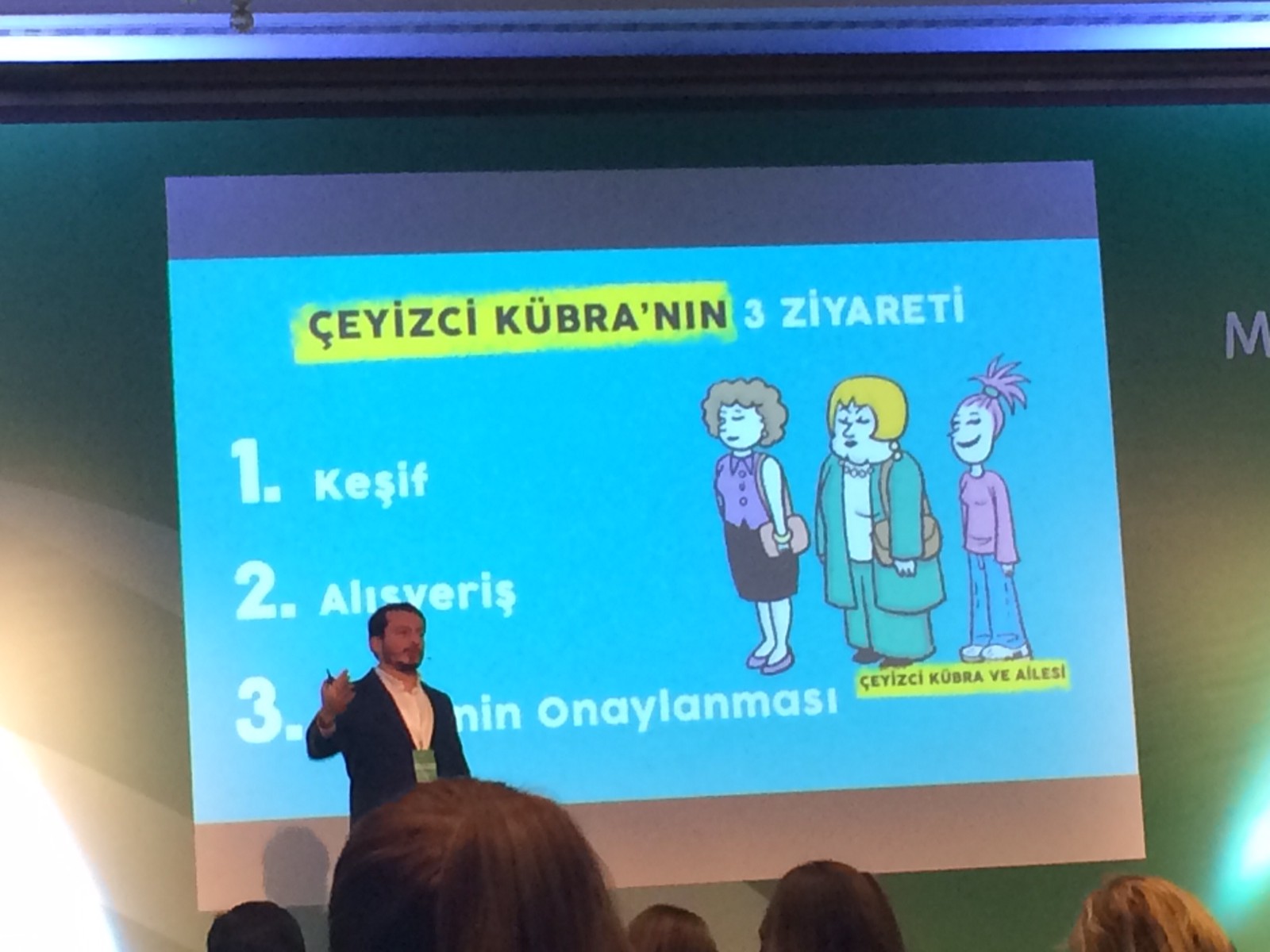
6. “Customer Experience on the Commodity Market” presented by Emre Celik (EnerjiSA Customer Experience Manager)
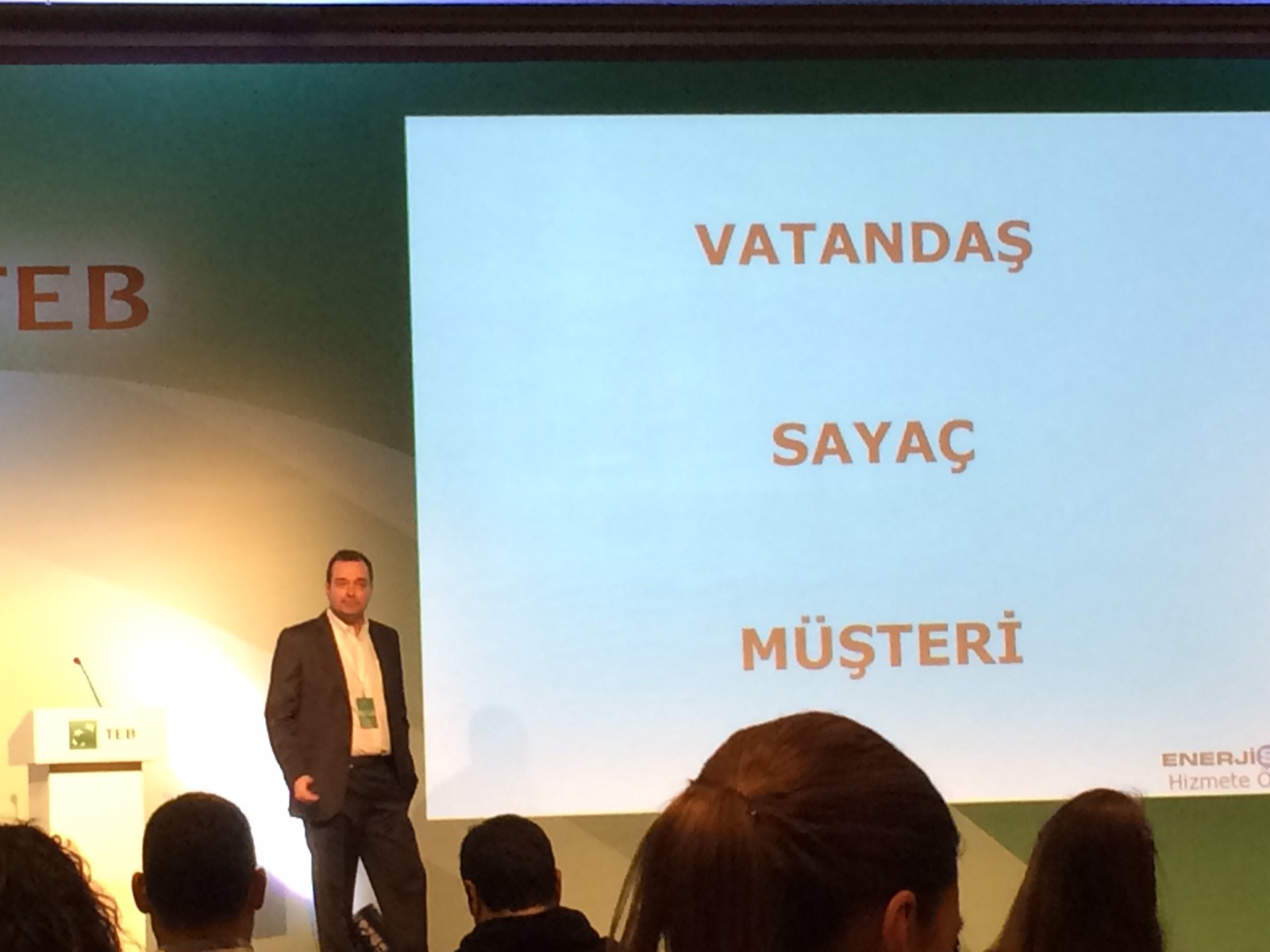
Emre Celik stated that, as EnerjiSA (the electricity energy branch of Sabancı conglomerate), their aims are to find unhappy customers and go for improvements shaped by their complaints. However, it is difficult to segment the energy sector compared to other sectors. This is because everybody has to use electricity, thus, everyone is a customer of EnerjiSA; which means segmentation and customer experience improvements are extremely hard.
In response to this challenge, Celik explained EnerjiSA’s solution named “customer oriented improvement”. This customer-focused improvement system has four main processes:
- Upper-level EnergySA managers and customers sit down at the same table to hold discussions about EnerjiSA, but the customers are not aware that they are facing the upper management. With this practice, customers feel that their voice is being heard, and the managers realize that the people they serve are individuals with different wants and problems. Real customer problems are directly delivered and understood by the upper echelon.
- EnergySA sends teams out to do on-site observations in order to record problems experienced by customers.
- After the first and second processes are done, EnerjiSA teams work on action plans and implement improvements on the system with customer-focused improvements in the branches. For example, after the appointment system for payments was developed, clients no longer have to wait in endless lines.
- Workshops were held for the all teams in the entire company to adopt the innovations. This helped everyone stay on the same page.
7. “What Happens in Your Customer’s Mind While You Design a Perfect Customer Experience?” presented by Emel Temucin (Founder and CEO of LeadNeuro)
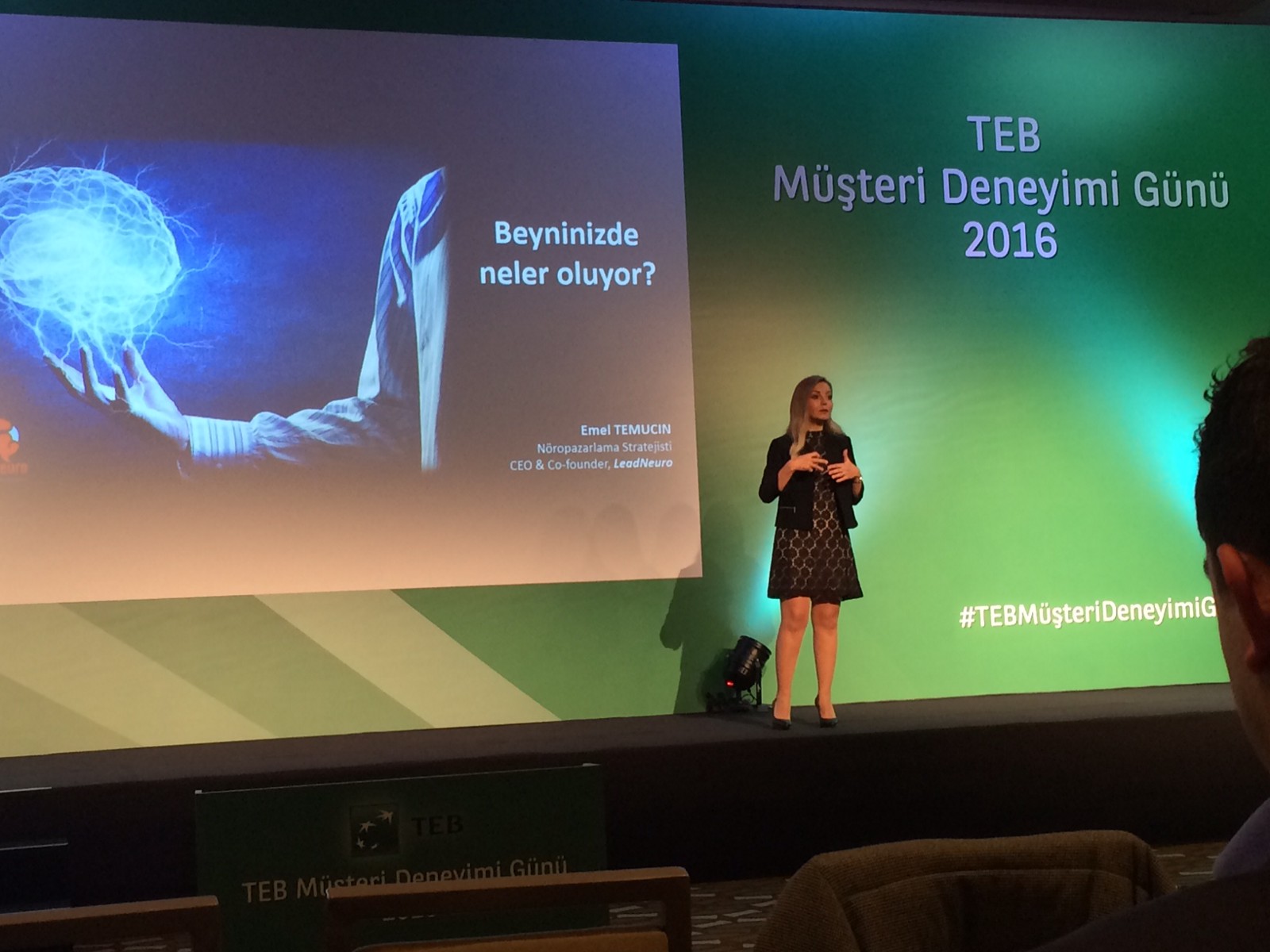
We all wonder about what our customers are thinking about at the moment of shopping and what motivates them when they decide. LeadNeuro’s (a neuromarketing company in Turkey) Emel Temucin placed the starting point of the journey to an excellent customer experience at this curiosity.
Did you know that customers mostly use their instincts and feelings when making decisions, and the impact of logic is actually very low? So, companies like LeadNeuro naturally work very hard to learn these instincts and feelings affecting consumer decisions.
Neuromarketing is an area that seeks to find out what kind of impact the campaigns have on customers by measuring neuro- and psychophysiological signs. Temucin talked about the methods used in neuromarketing research:
- The communication language must be translated into a “you” language. Humans are not selfish, but we are very self-centered creatures. That’s why the text that speaks to the individual is adapted more quickly.
- Differences should be displayed visually. A side-by-side display of a service/product’s old and current states affects consumers more.
- Promises have to be demonstrated. Create situations that the client will want to be in. For example, Coca-Cola commercials often use happy family meal scenarios that individuals would like to be in.
- Decrease cognitive strain. Customers quickly get away from things they can not understand. Excellent customer experience means making the customer’s life easier. For example, iPhone’s complex yet invisible operating system, attracts users by its visible simplicity.
- Anthropomorphize products. Using the human face structure (eyes-nose-mouth) in the product makes the customer feel subconsciously closer to the product. In particular, if eyeballs look bigger, it attracts more attention according to research.
8. “Right Contact Point in Customer Experience” presented by Ozkan Demir (Co-founder of Pisano) and Kaan Celikmen (GAP Sales Operations Manager)
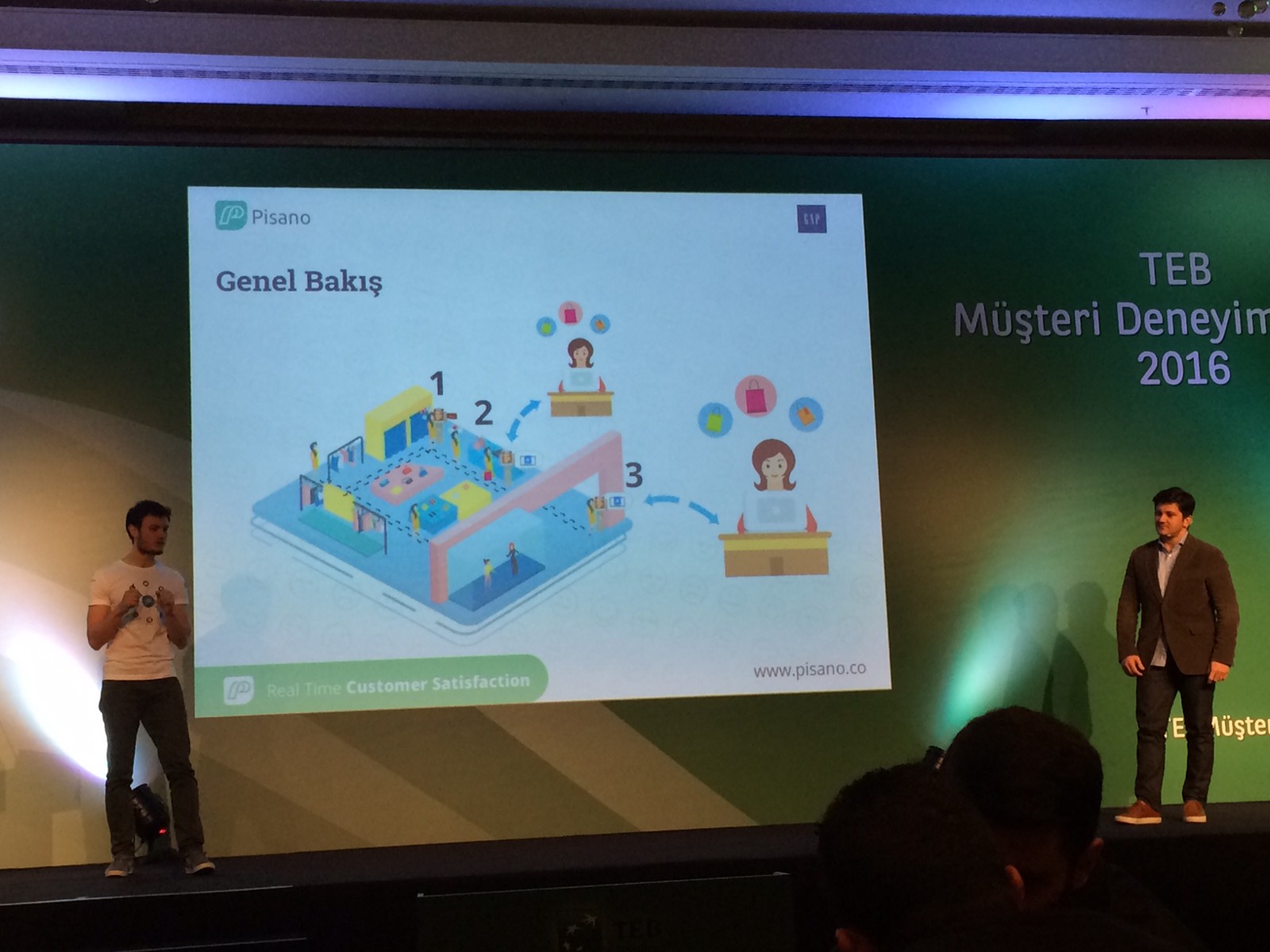
Customers now demand every process to be fast and their attention interval is very short. Leaving feedback sounds like a waste of time for them. They do not bother to leave their true opinions on long and cumbersome paper questionnaires, as their attention quickly disperses in answering the questions anyway. Ozkan Demir from Pisano (the most popular web-based customer experience platform in Turkey) and GAP’s Kaan Celikmen highlighted these issues in their talk.
On the other hand, businesses want to customize their customer experience to get ahead of their competitors. This customization is only by gathering customer insights. At this point the solution is to catch those contact points where the customer will not see interactions with the brand as a waste of time. It has also been observed that it is more efficient for customers to collect feedback from a single channel than to collect feedback from many channels. If the questions are concise, customers leave reliable feedback without distractions. Thus, customer feedback increases both in quality and quantity.
When GAP started working with Pisano, collected 1,500 real customer email addresses in 7 stores in just 2 weeks. Without Pisano, GAP can reach this number in 33 weeks.
Also, GAP observed that the coupons they offered with Pisano’s cabin surveys earned them extra 8 sales on average per week.
The last part of the event was the Q&A session. Gorkem Ihlamur from Boyner talked about innovative measures in the industry during the session. He mentioned that they use Pisano digital questionnaires in front of the checkout registers. He also explained how customized questionnaires are created, and how TEB announces new credit card and insurance campaigns with Pisano questionnaires.
TEB Customer Experience Day was really very productive and fun. We are grateful to TEB for hosting this beautiful event.




